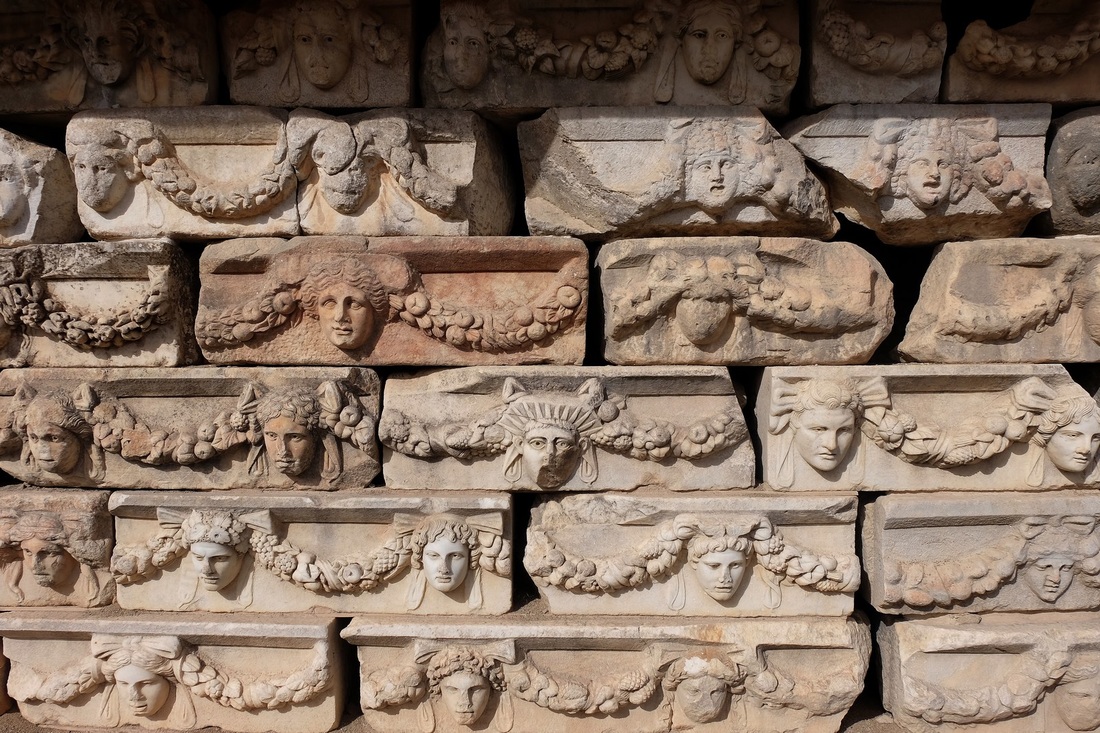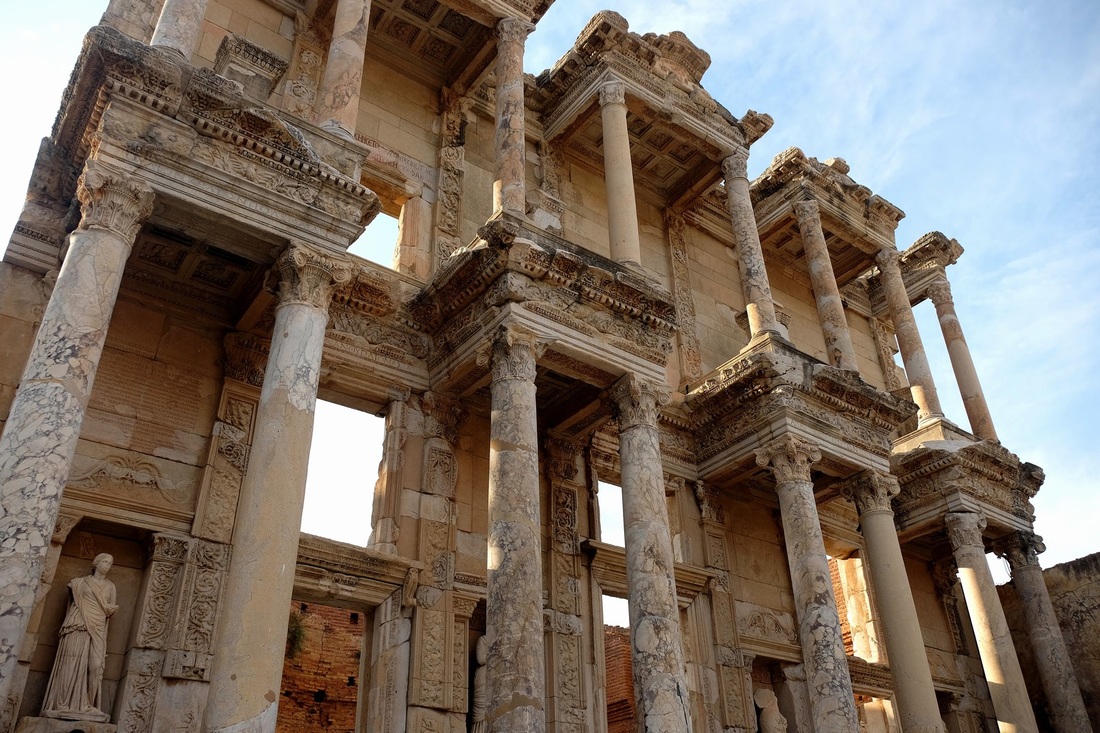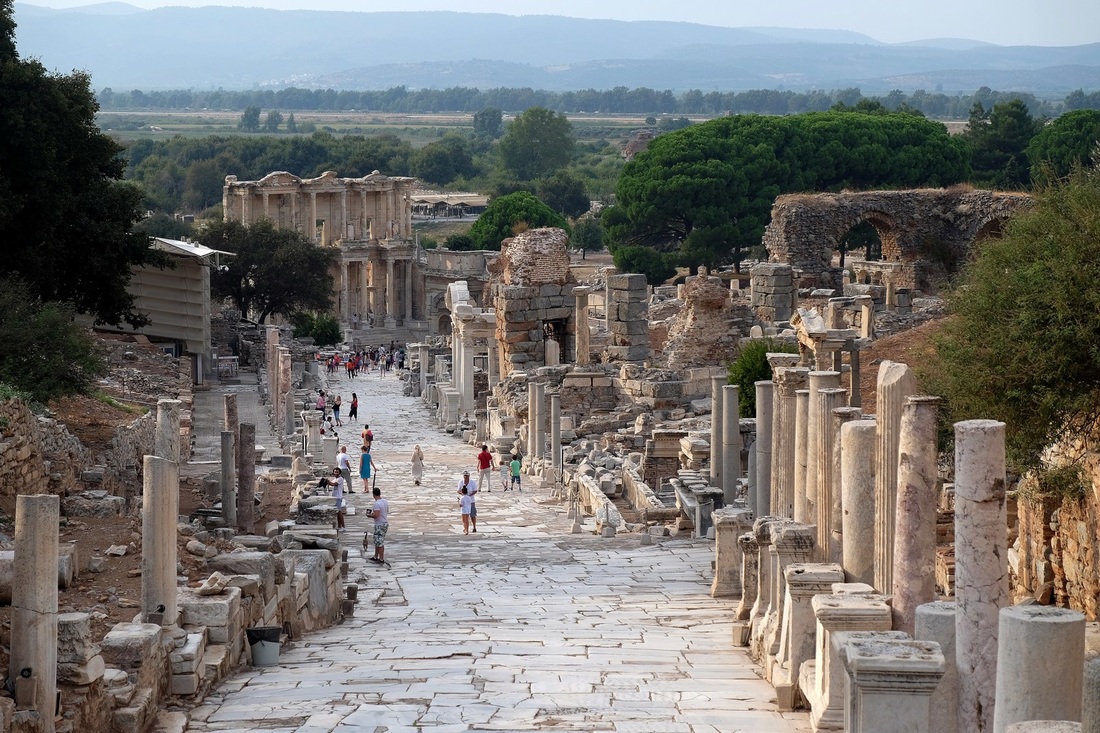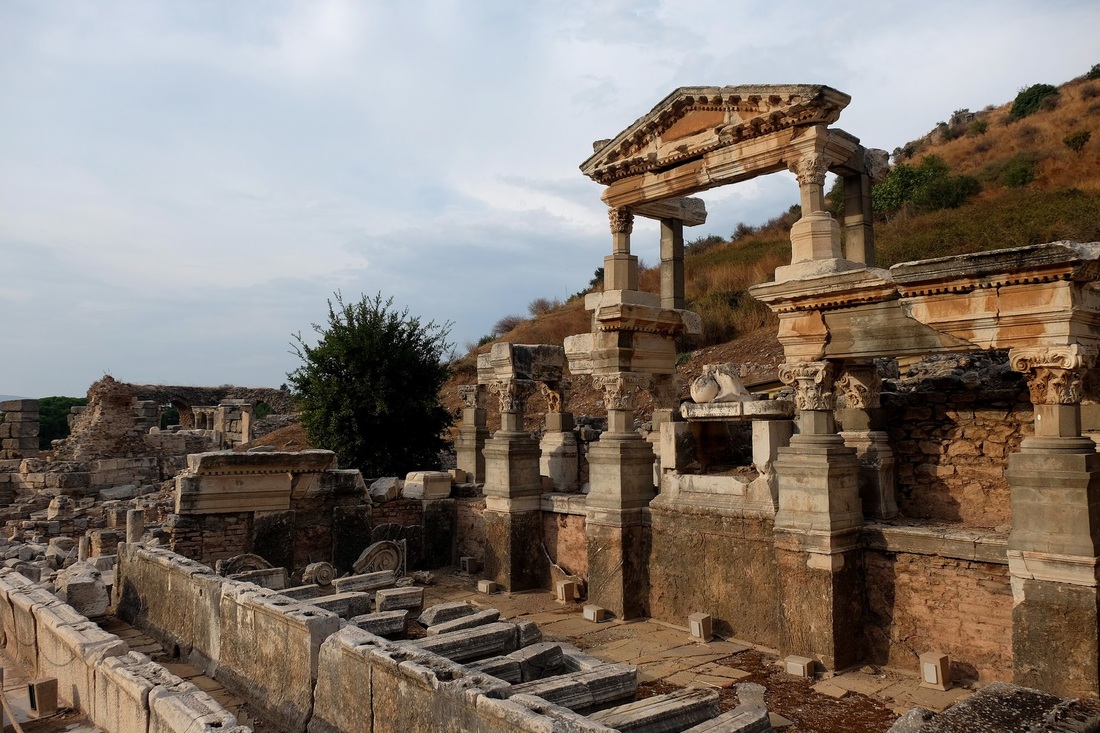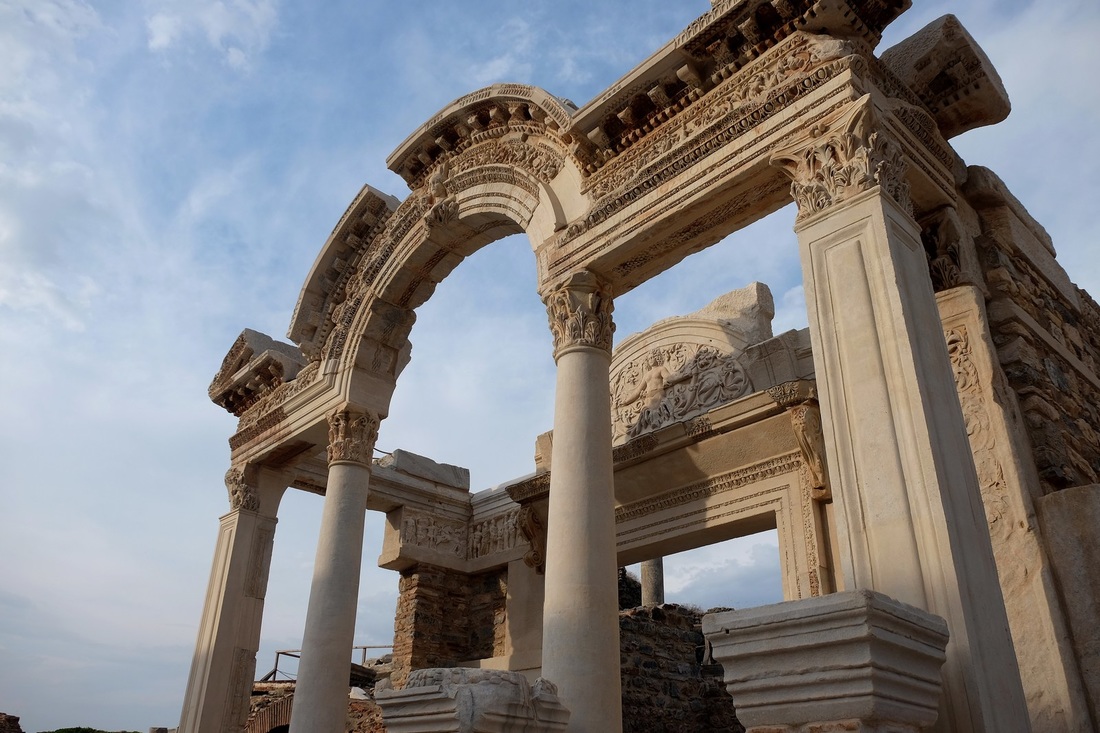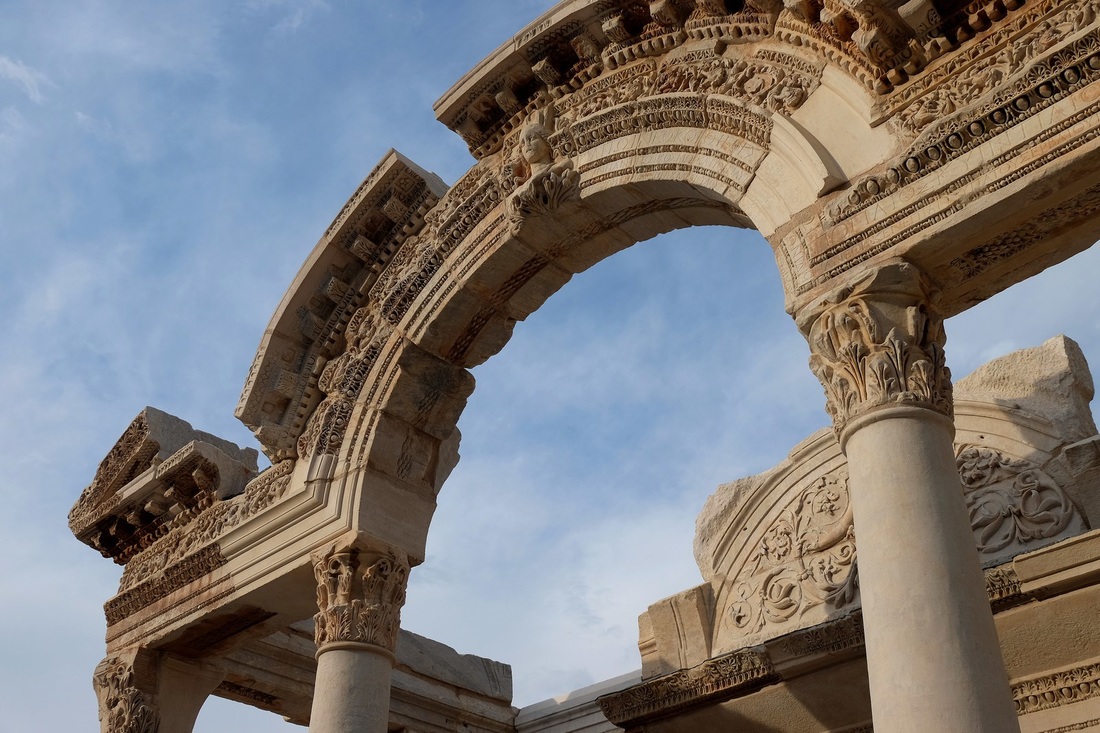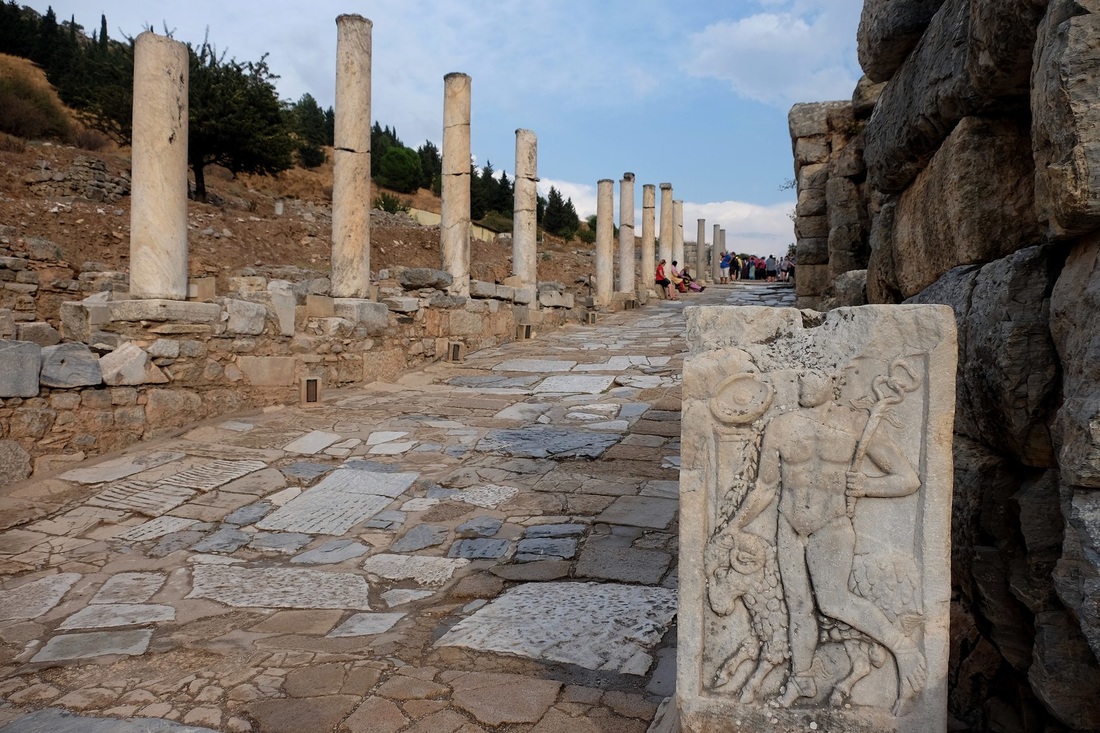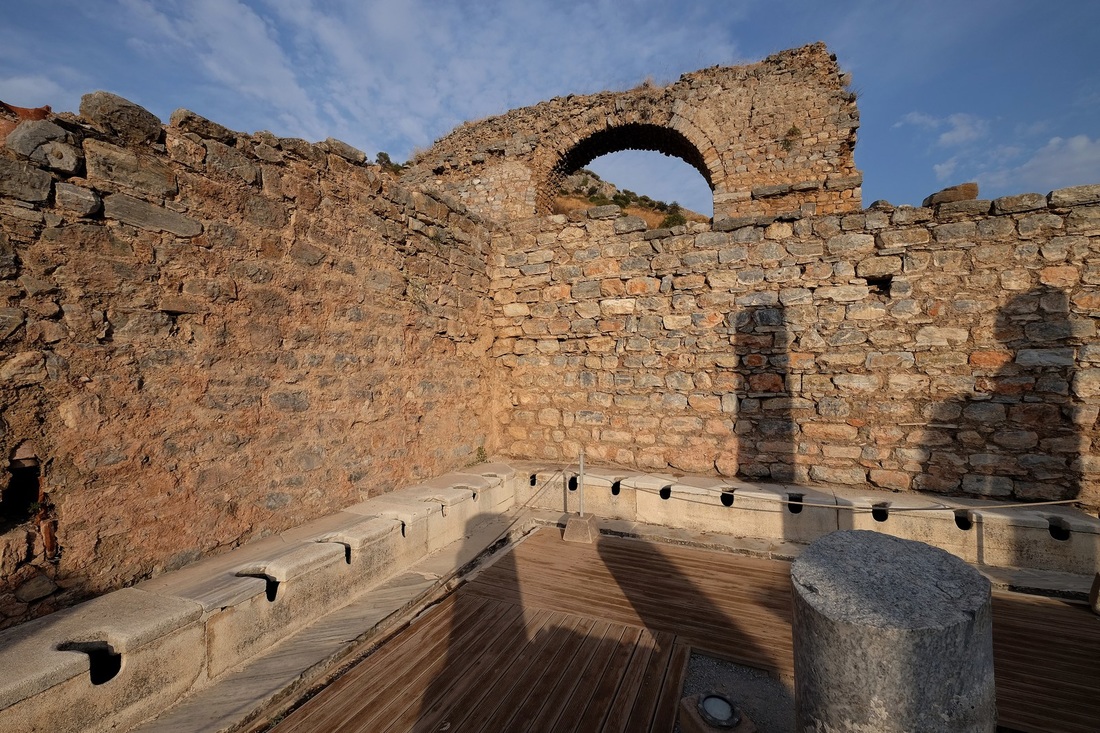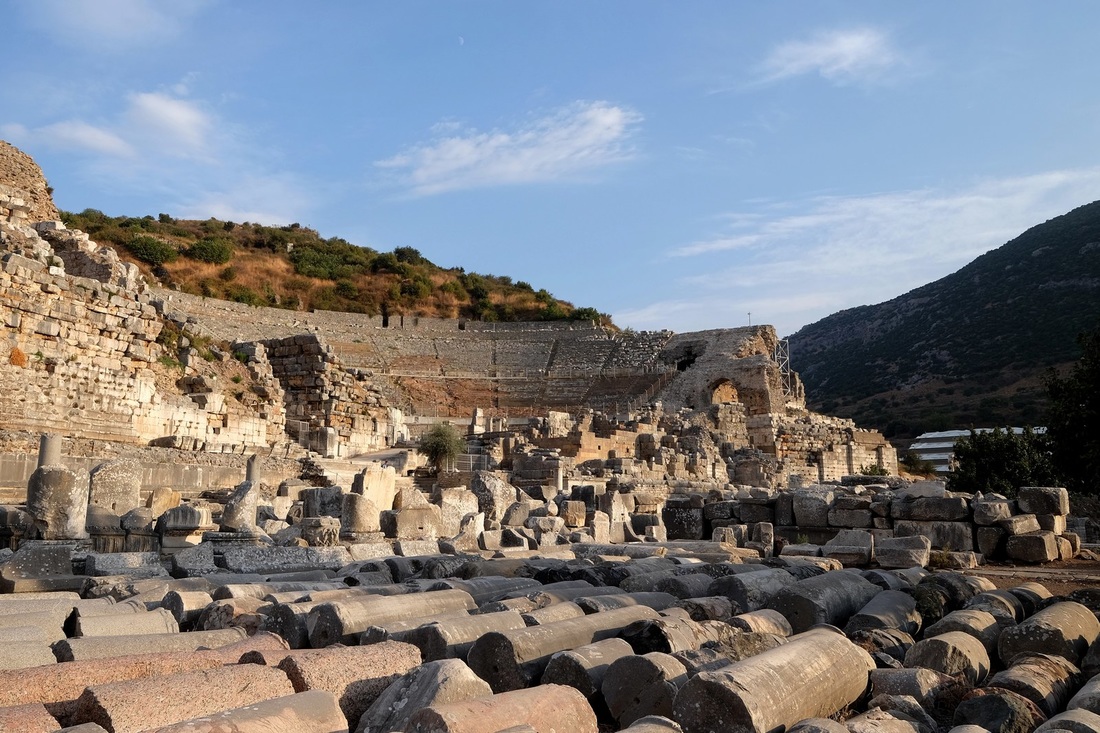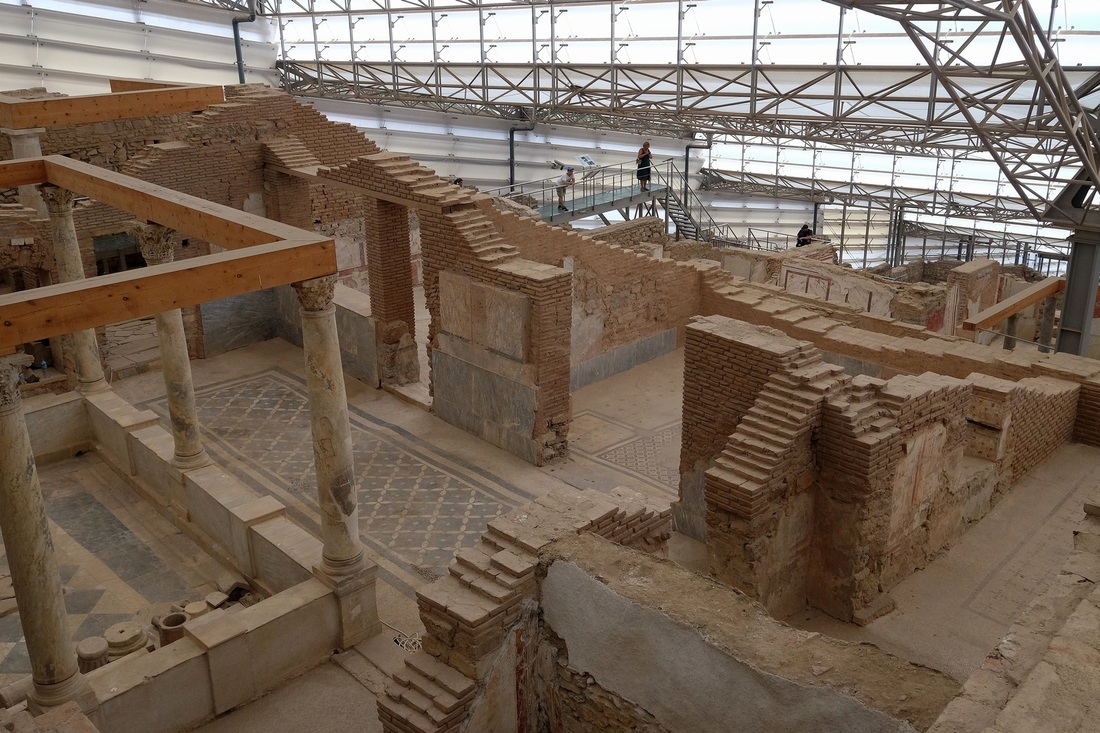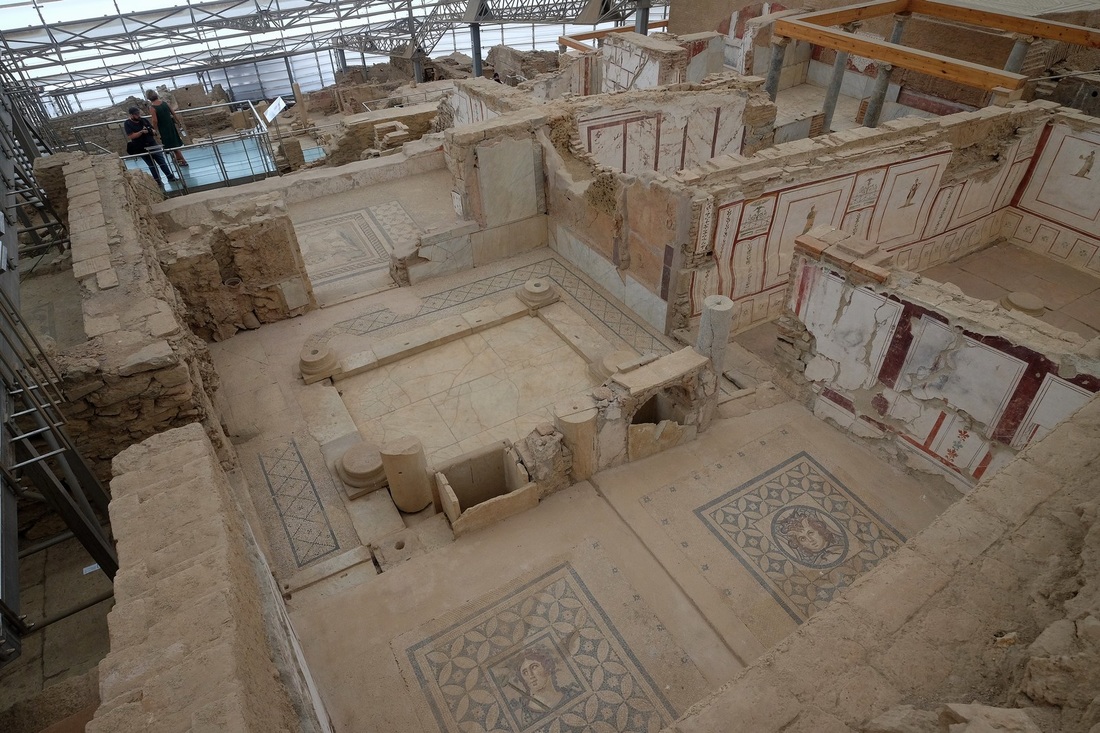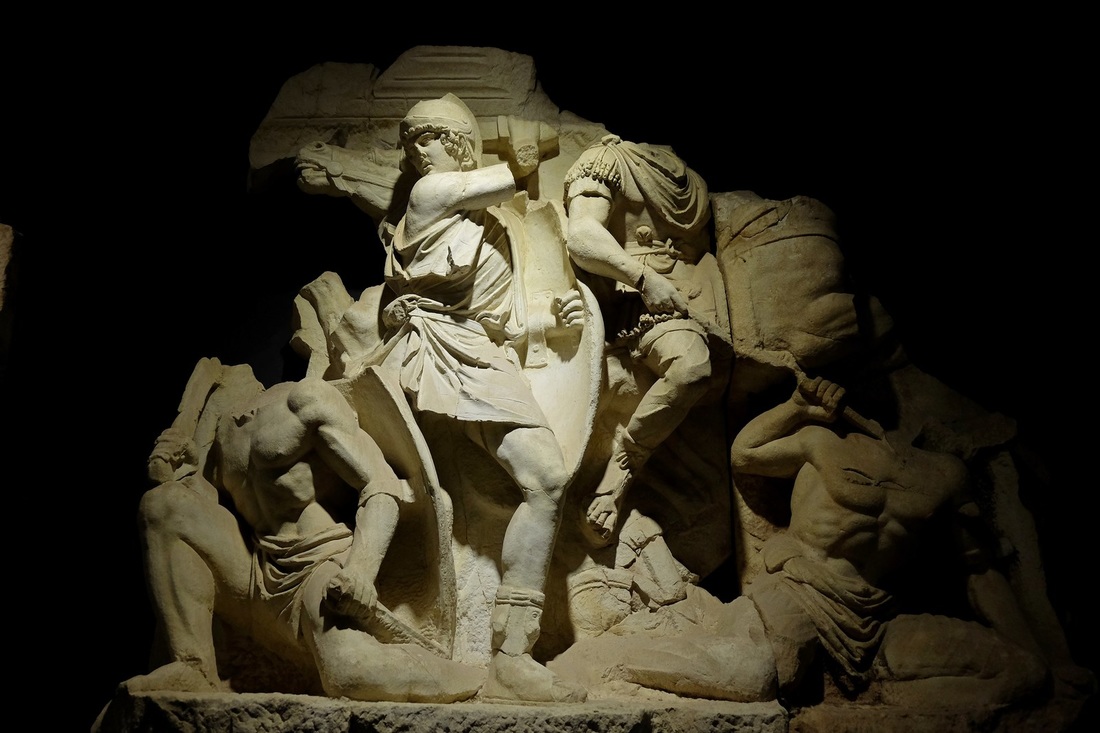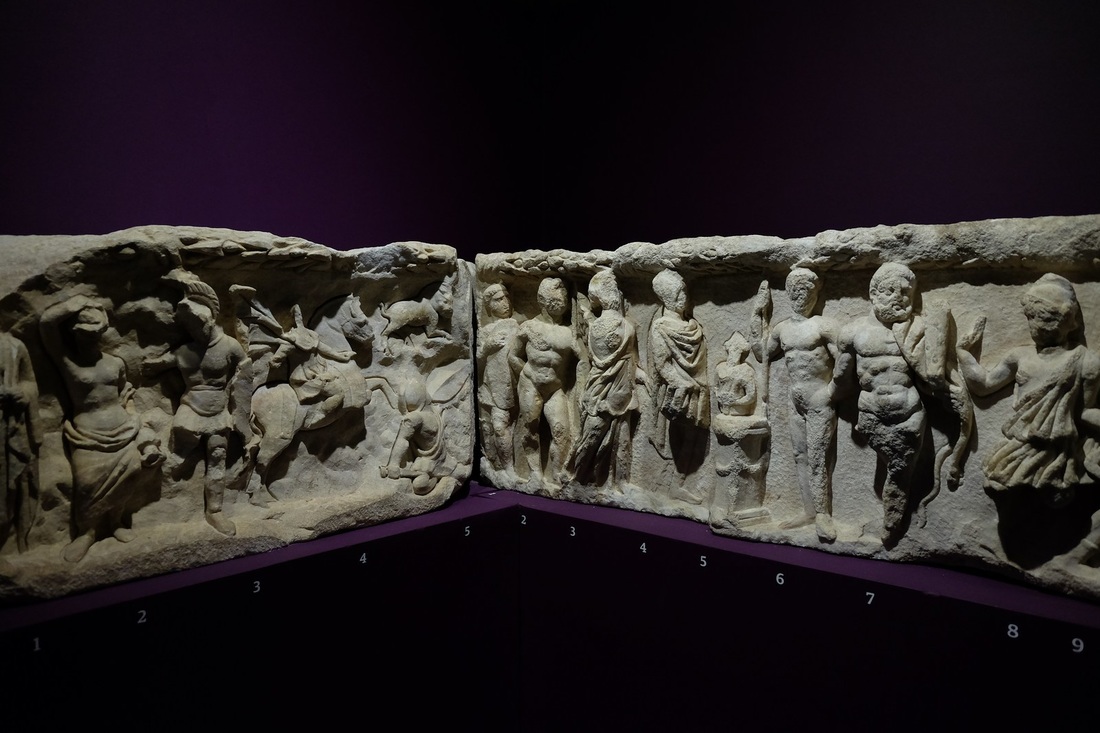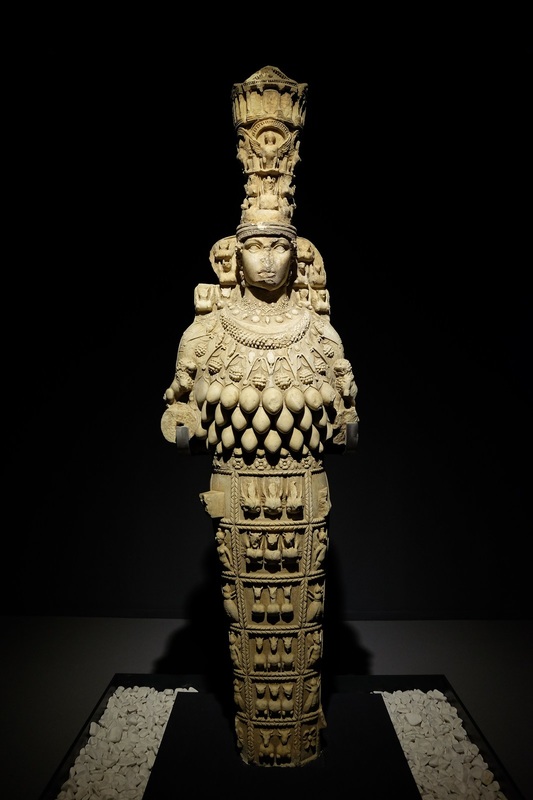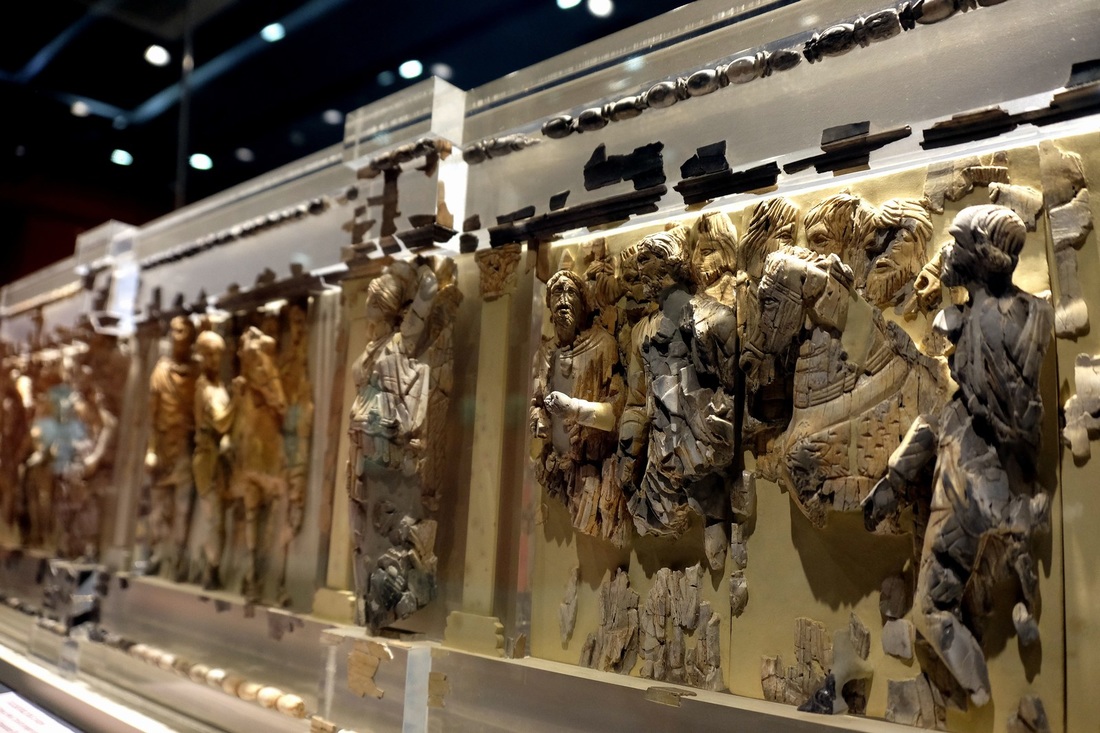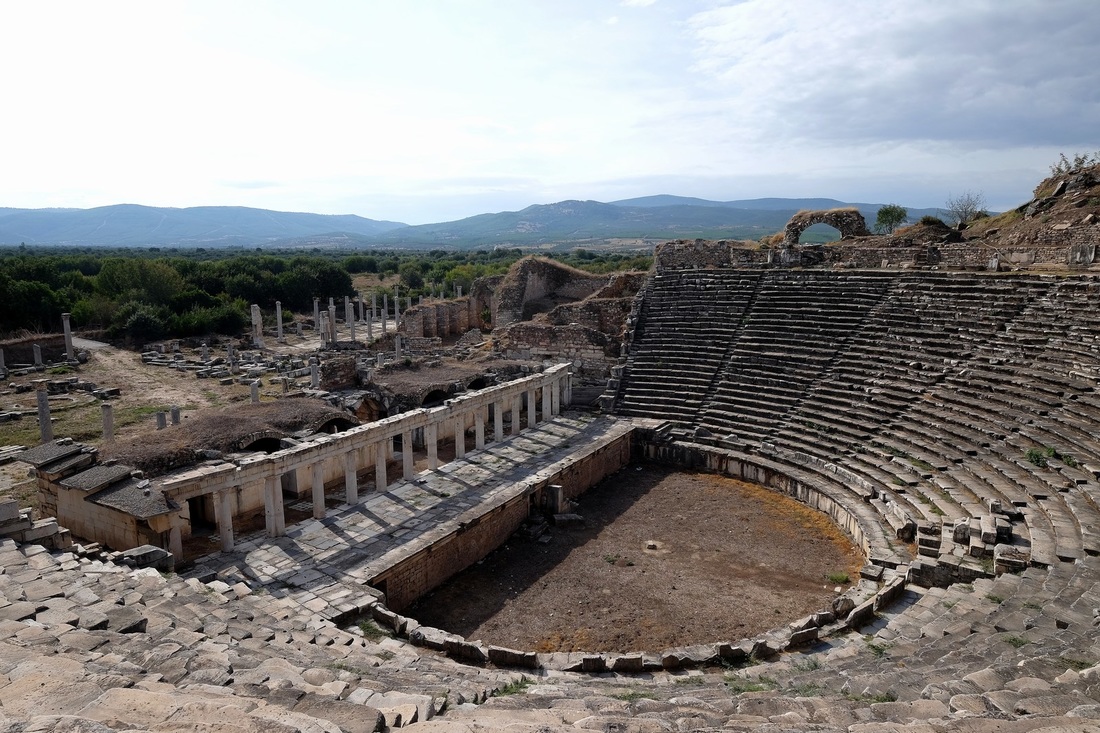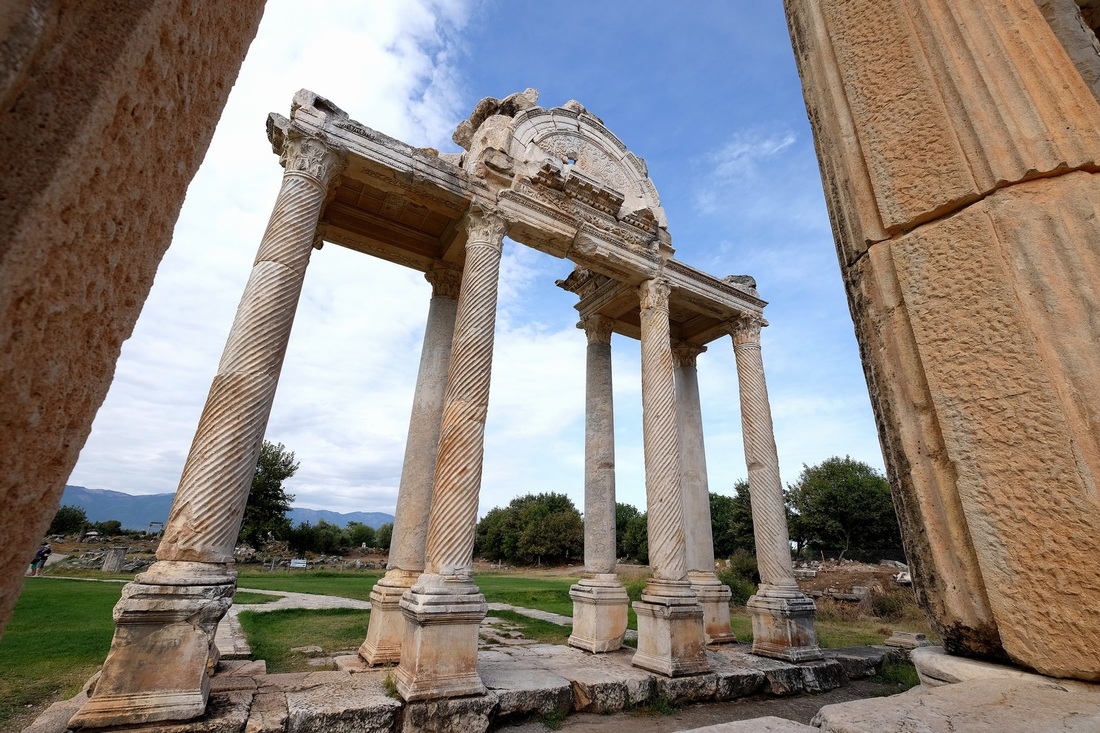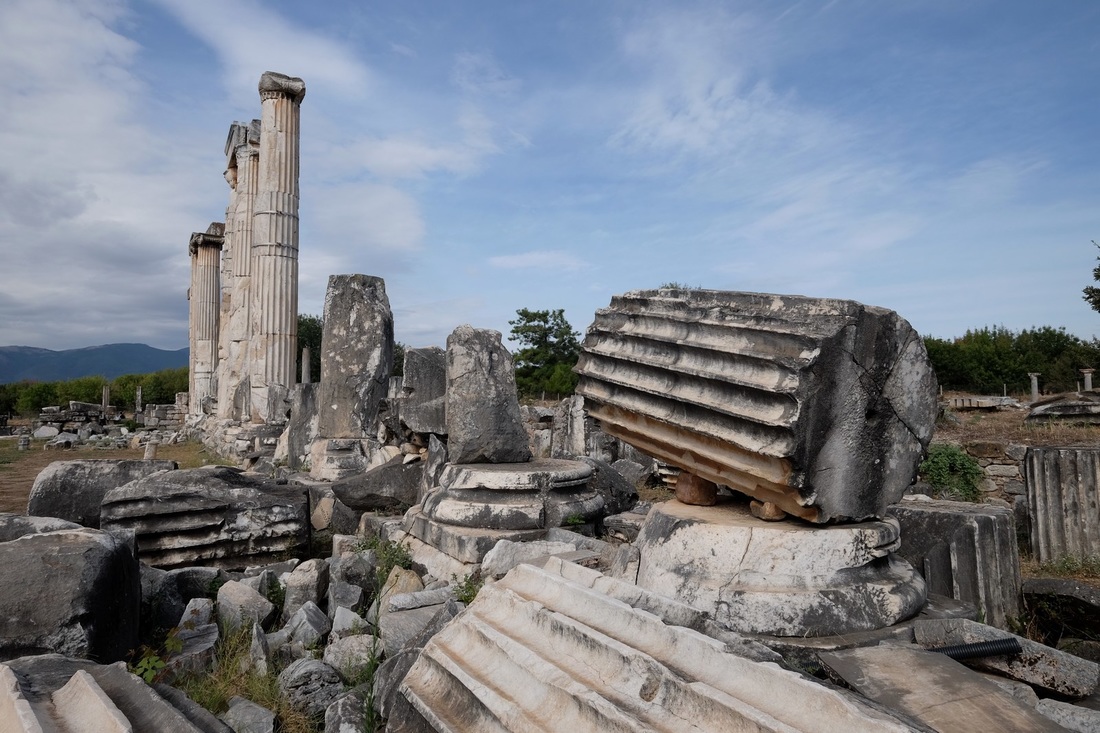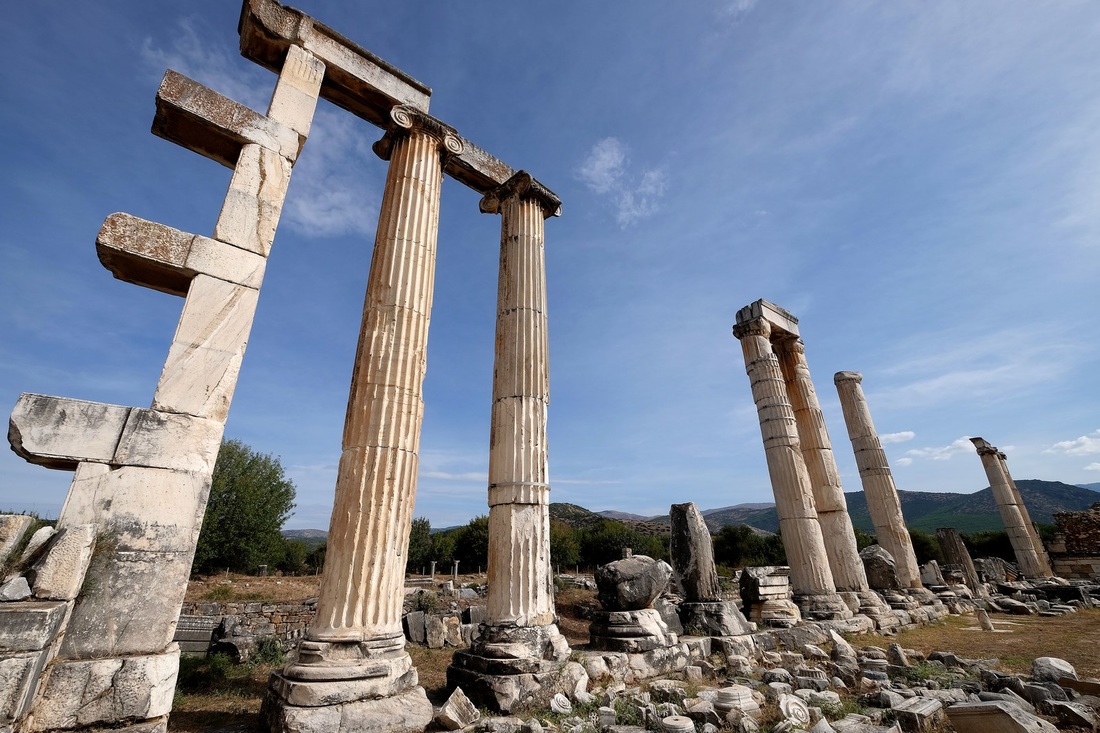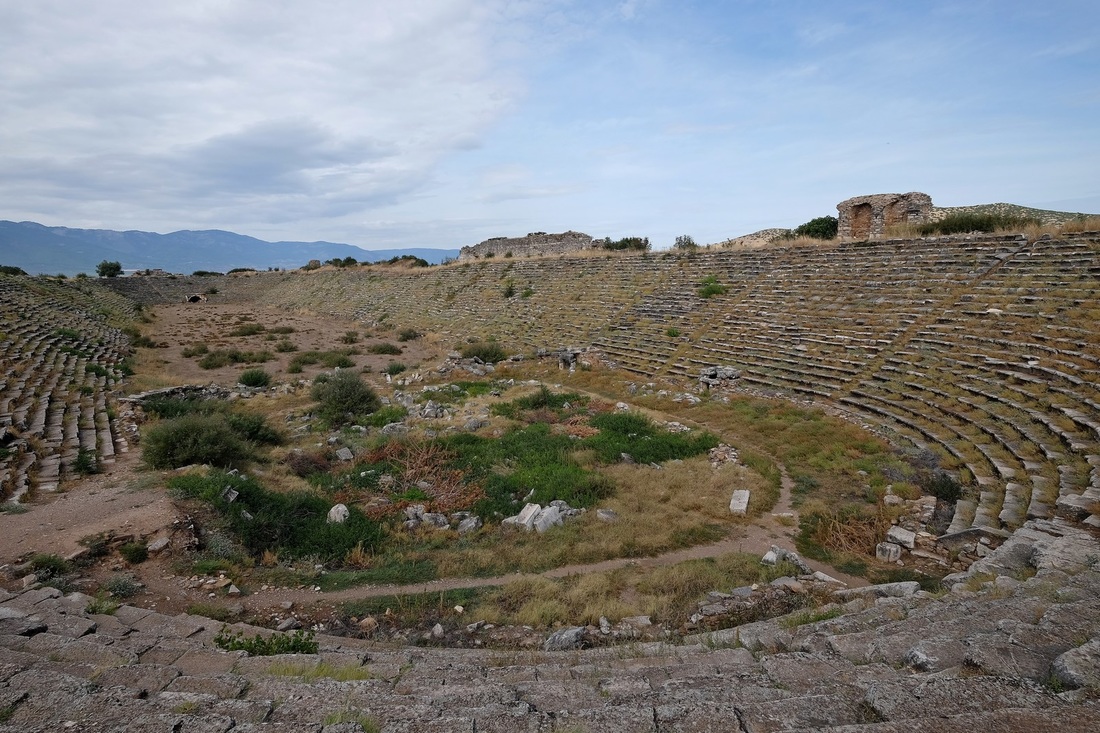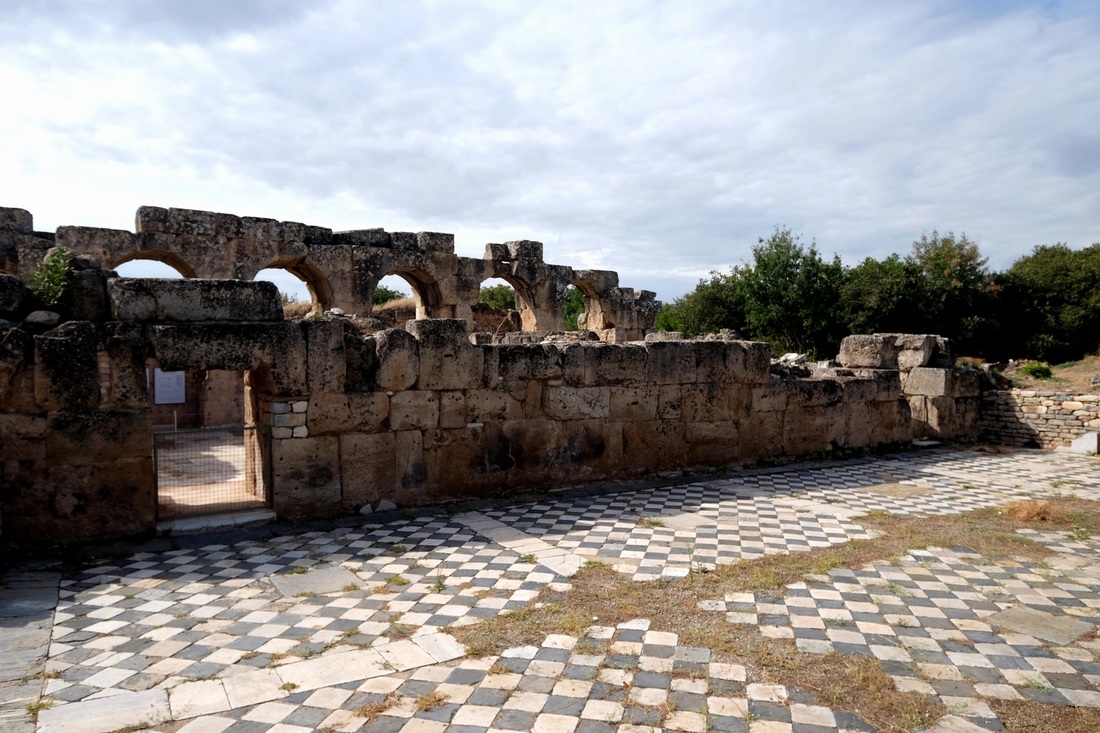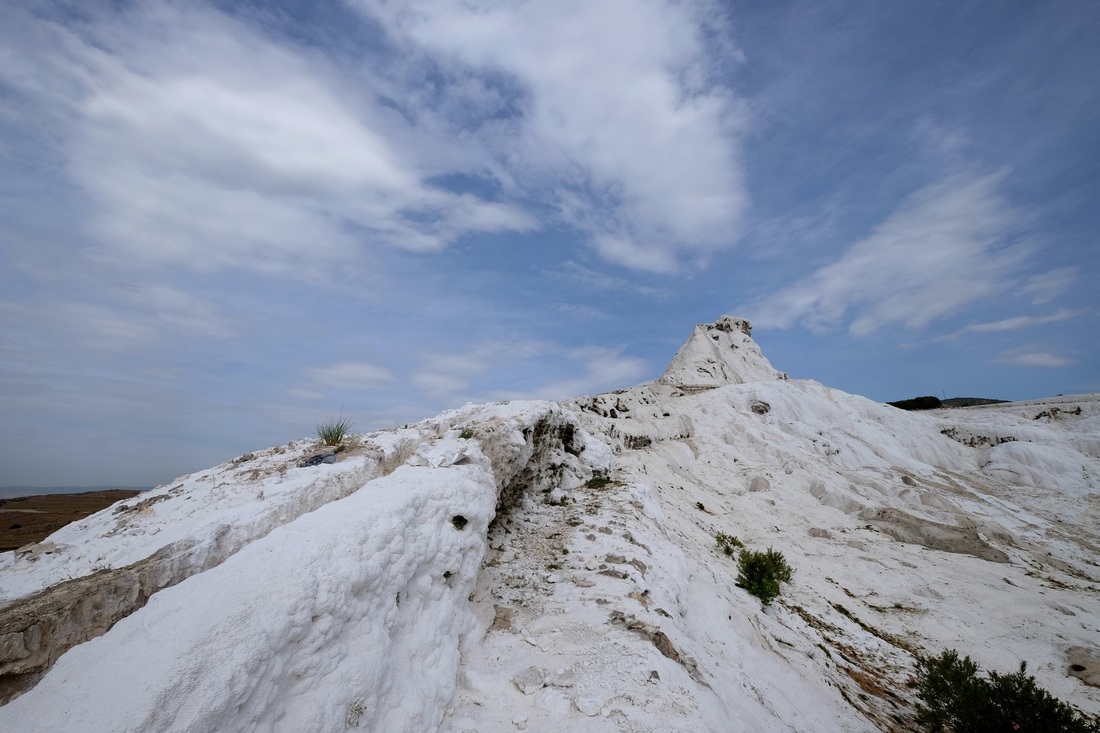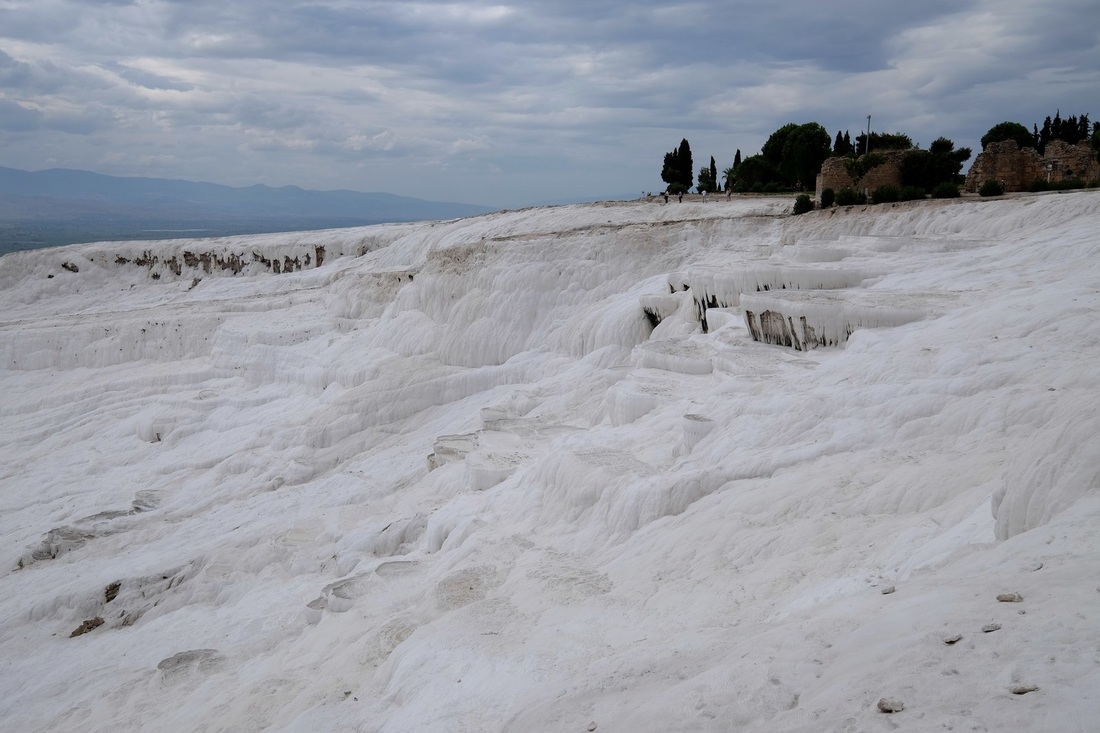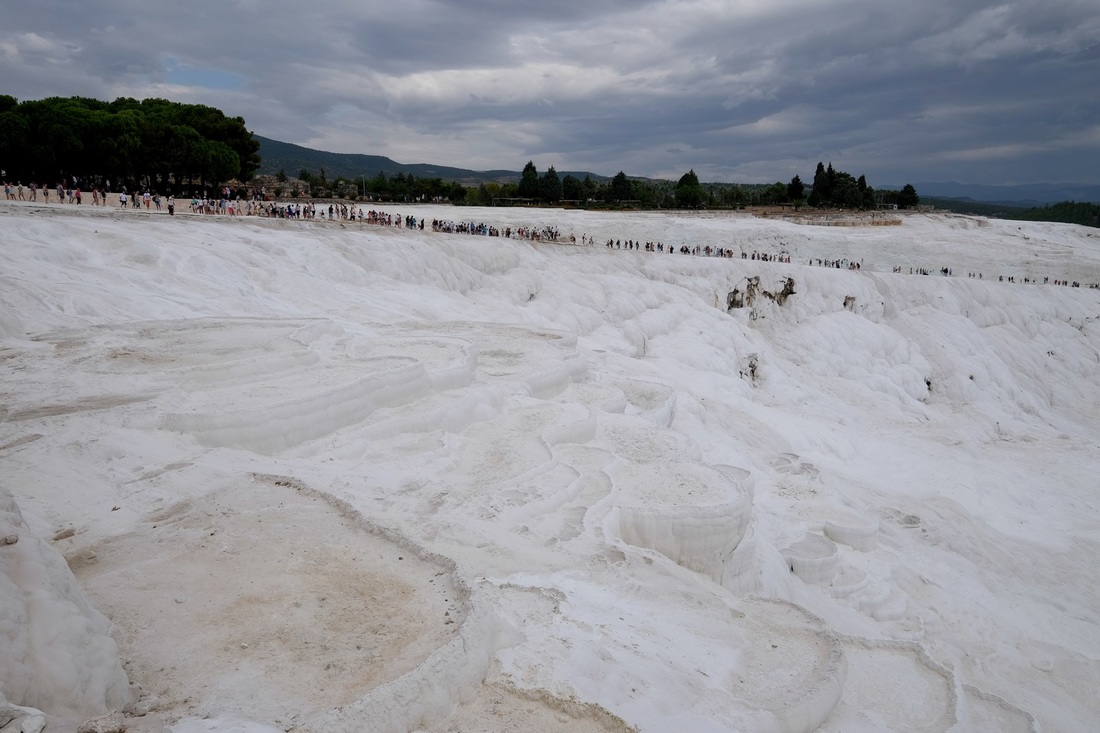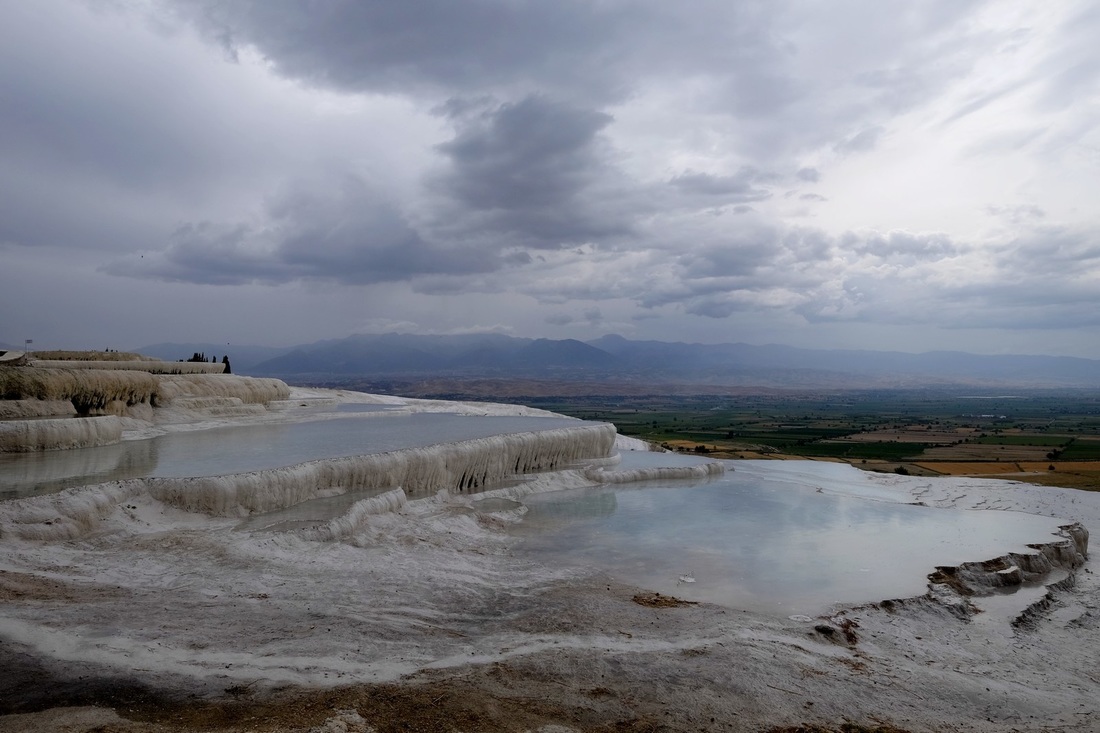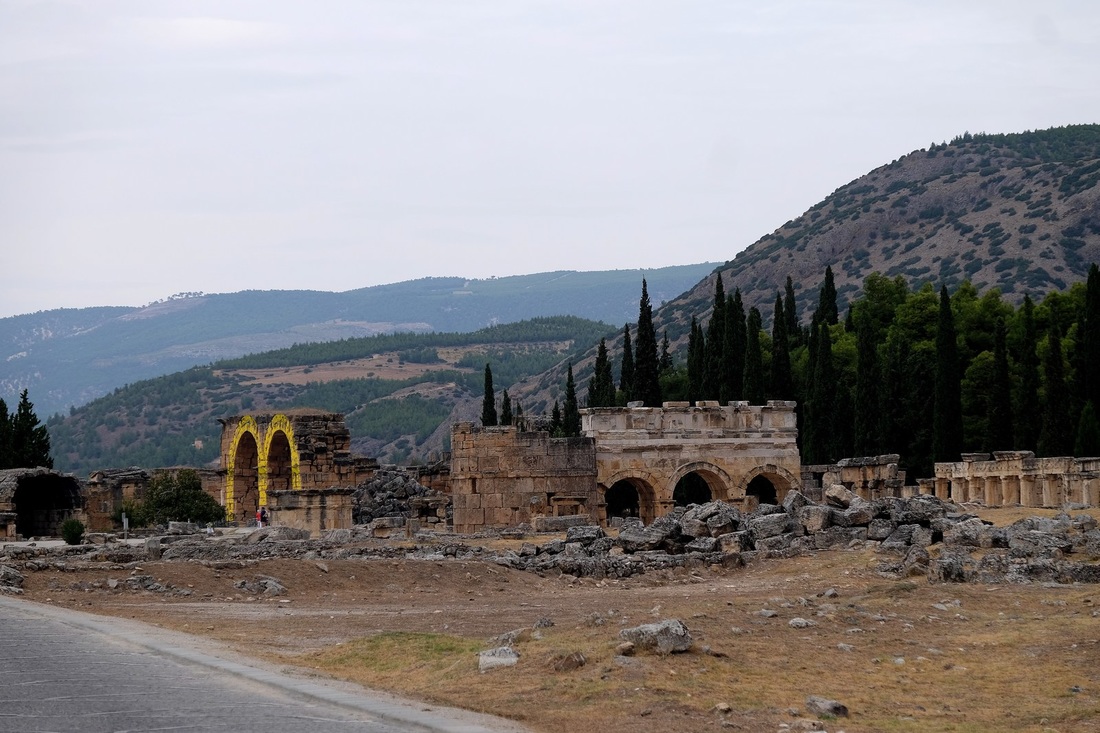What really floored me was how "real" the faces-in-stone looked. In fact, it is so real that the face-detection software in my camera started picking up and isolating the faces you see here. A truly poignant moment of technology bridging the 2000-year gap between 1st century art and 21st century digital imagery.
This is the last stop of my tour of ancient cities all over Asia and the Middle East. And it was a fitting finale. The Graeco-Roman ruins at Ephesus and Afrodisias are amongst the grandest and best-preserved in the world. Strolling down the marble-paved, monument-lined streets of these sites evokes both inspiration and imagination. There are precious few places which provide such complete insight into a lost civilisation of a bygone era. These two world-class sites are truly must-see's on any Turkey itinerary and must-do's on any bucket list.
Ephesus is, by far, the more well-known attraction. It is also the more illustrious, historically speaking. One of the Seven Wonders of the Ancient World, the Temple of Artemis was built here in the 5th century BC (rebuilt in 3rd century BC) and was supposedly the largest structure of its era. Sadly, only one out of its 127 columns remain standing today. The city of Ephesus reached its zenith during the Roman and Byzantine eras from the 1st to 6th century where it was the most important city in Asia Minor, second only to Constantinople (Istanbul today). Most of the ruins we see today are from this period, and a number of them pay tribute to Roman Emperors Trajan and Hadrian.
Interestingly, Ephesus is also significant from a biblical perspective. It is said that St. Paul lived here in the 1st century, followed by St. John, who wrote his gospel in the city. Legend has it that the Virgin Mary spent the last years of her life here, under the care of St. John. With its association to two apostles and Christ's mother, the city remains an important pilgrimage site for Christians. Ephesus fell into decline after its harbour silted up in the 6th century. Following a sacking by the Arabs in the 7th century, the city was largely abandoned until its rediscovery in the 1800's. Excavations have been ongoing for a century and yet only 15% of the city has been unearthed. Today, Ephesus sits 5km inland from the coast and is, unfortunately (for photographers), a major destination for tour-bus tourists and the cruise ship crowds.
Afrodisias, on the other hand, is much more secluded. It sits 100km inland, a relatively far-away two-hour drive from the tourist hotspots and is often left off the itinerary of all but the most hardcore of tour agencies. I was there at about 9am, and only spotted two tour buses vs the 20 at Ephesus at any time of the day. The ruins at Afrodisias are also more spread-out, so the crowds disperse fairly quickly. And although the history of Afrodisias is nowhere as glorious as Ephesus', I actually prefer this site in some ways. Its ruins are equally well-preserved, although lacking the one-or-two "blockbuster" monuments at Ephesus. The quieter atmosphere allows for a more immersive experience, and it leaves a much cleaner impression, sans the selfie-stick adulteration of the Ephesus excursion.
The name of the city was derived from the Greek goddess of love Aphrodite - Venus to the Romans. A magnificent temple/sanctuary was built in her name in the 2nd century, under the rule of Emperor Hadrian. The site also boasts a spectacularly preserved 270m long, 30,000-seat stadium, considered to be the largest and best preserved Roman stadium in the world. The city owes its state of preservation, and subsequent re-discovery, to a pair of earthquakes. In the 7th century, the city was destroyed by an earthquake and never subsequently repaired, it slowly sank into the ground. Since then, small settlements have been built over and around the site, gradually becoming the town of Geyre over the years. In the 1950's, another earthquake forced the town's residents to relocate, paving the way for a massive excavation effort in which the ruins we see today were unearthed, beautifully preserved from being buried for 1,500 years.
Here are some photos from my walkabouts:
If you look carefully, you'll notice that the columns on the top floor are significantly thinner than the columns on the ground floor. This was a deliberate effort to exaggerate the building's size by the distortion of visual perspective - the thinner columns look further away, therefore the building looks taller! How ingenious.
This is the main thoroughfare of the city. It is lined with monumental structures, terraced houses and you can just about see the Library of Celsus at the far end.
A large sponge-on-a-stick would be used to clean one's bottom after the deed. This communal brush would then be passed around. It is said that the phrase "grabbing the wrong end of the stick" originated from the occasional fumble which occurred in these public toilets!
This was supposed to be arrestingly beautiful. But to be honest, one has to manage expectations now that the waters which once flowed into Pamukkale's multi-leveled natural pools seem to have dried up. If you look intently at the 2nd and 3rd pics, you can just about imagine (with a lot of effort) how pretty it must have been back in the day. The last pic is of one of the few remaining pools of water, but it doesn't quite have the multi-level-cascade effect. Yet, thousands of tourists throng this site every day, as can be seen from the line of people in the 3rd pic.
I was more amused by how I could photoshop a McDonalds sign onto one of its arches. I'm lovin' it. Haha.
